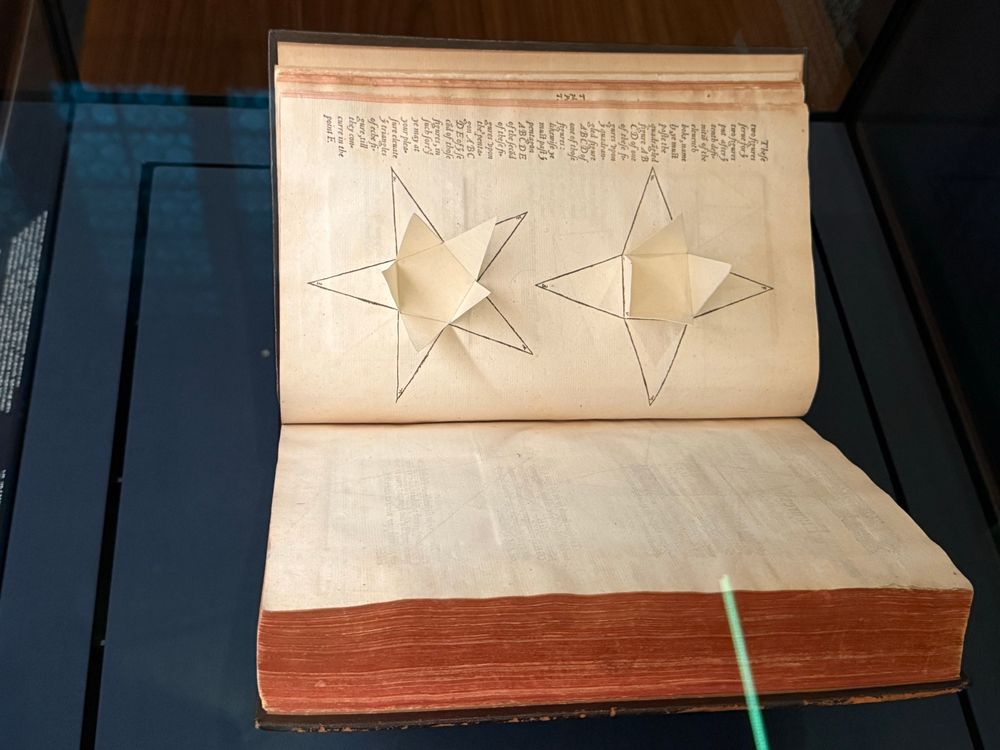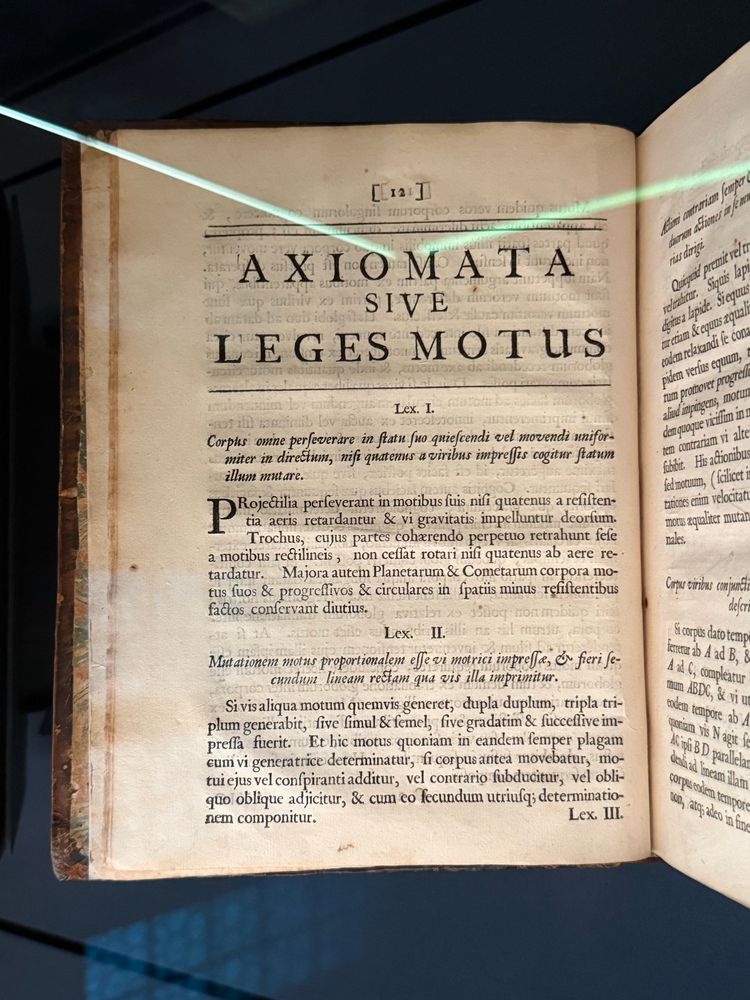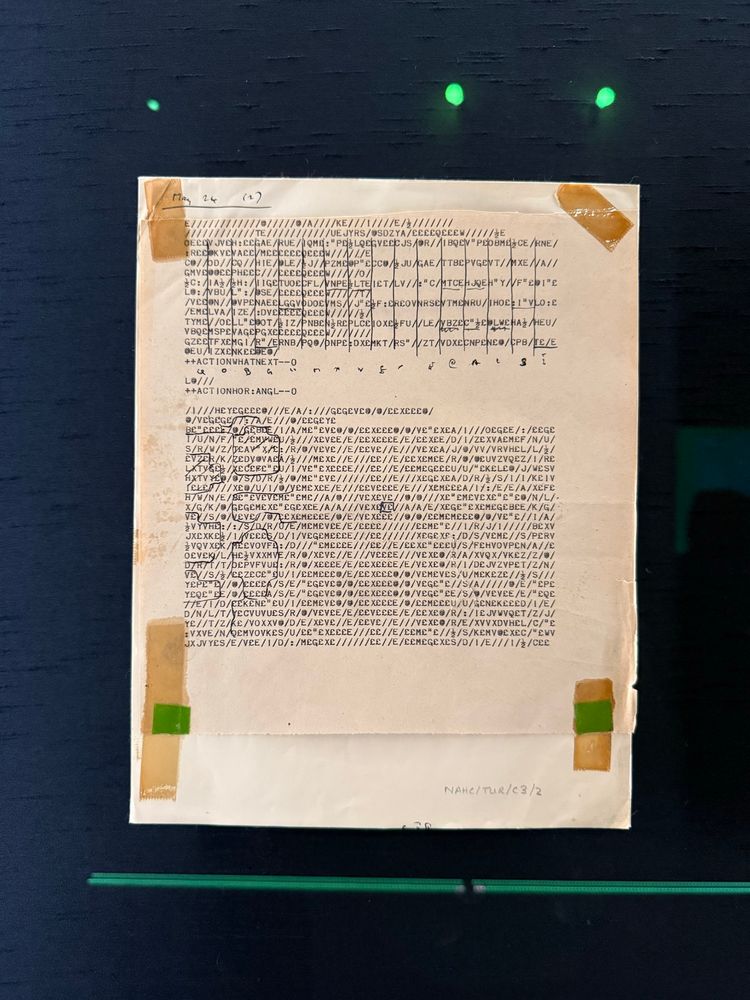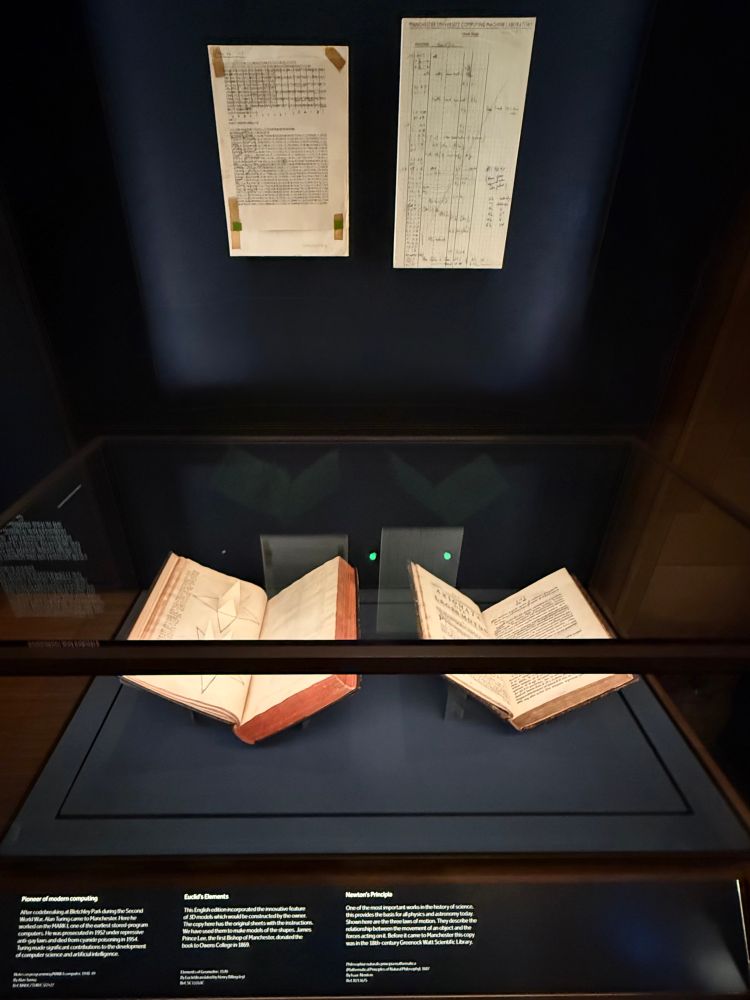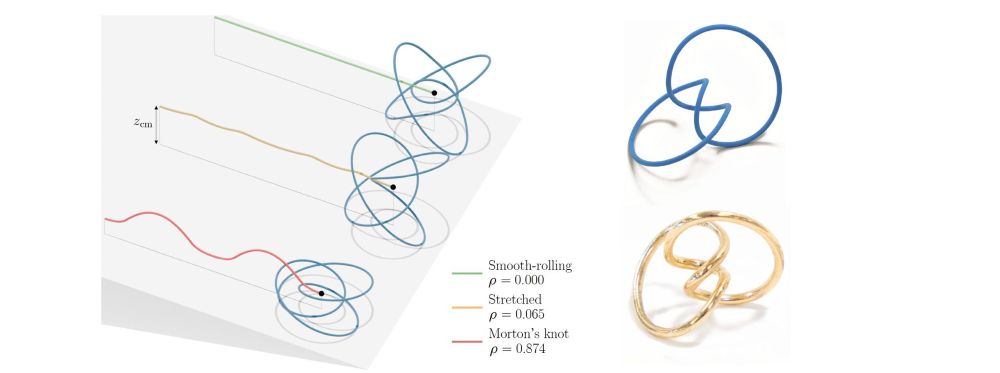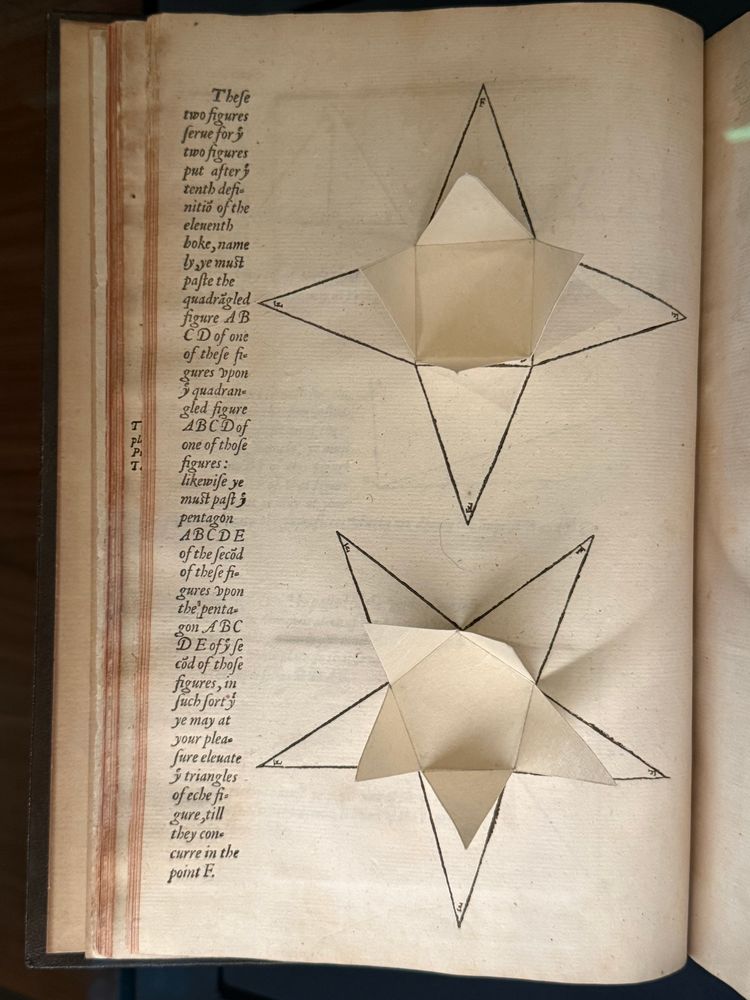
Euclid’s Elements is the second-most printed and studied book in history — after the Bible.
Written around 300 BC in ancient Greece, this edition is its first English translation (1570). It remained a core math textbook well into the 20th century.
04.08.2025 10:25 — 👍 0 🔁 0 💬 0 📌 0
And they work in real life too :)
Smooth-rolling objects require virtually no force to start moving – even with low friction, they roll.
31.07.2025 17:27 — 👍 4 🔁 0 💬 1 📌 0
An object is “smooth-rolling” if its center of mass remains at a constant height while it rolls.
We created knots with this property by combining Morton’s knots with Two-Disk Rollers.
31.07.2025 17:27 — 👍 4 🔁 0 💬 2 📌 0
Smooth-rolling knots!
At @markpauly.bsky.social’s lab, we found a way to optimize knots for smooth rolling.
I presented our work at Bridges 2025 – the conference for #MathArt.
More below ↓
31.07.2025 17:27 — 👍 31 🔁 4 💬 2 📌 1
Thank you Keenan — really means a lot!
Your Repulsive Curves are actually what got me working on knots in the first place. :)
29.07.2025 20:47 — 👍 3 🔁 0 💬 1 📌 0
Each number becomes a binary vector representing its prime divisors:
1 → [0, 0, 0, …]
2 → [1, 0, 0, …]
3 → [0, 1, 0, …]
6 (2×3) → [1, 1, 0, …]
30 (2×3×5) → [1, 1, 1, 0, …]
Each bit = “is divisible by the n-th prime?”
29.07.2025 20:01 — 👍 0 🔁 0 💬 0 📌 0
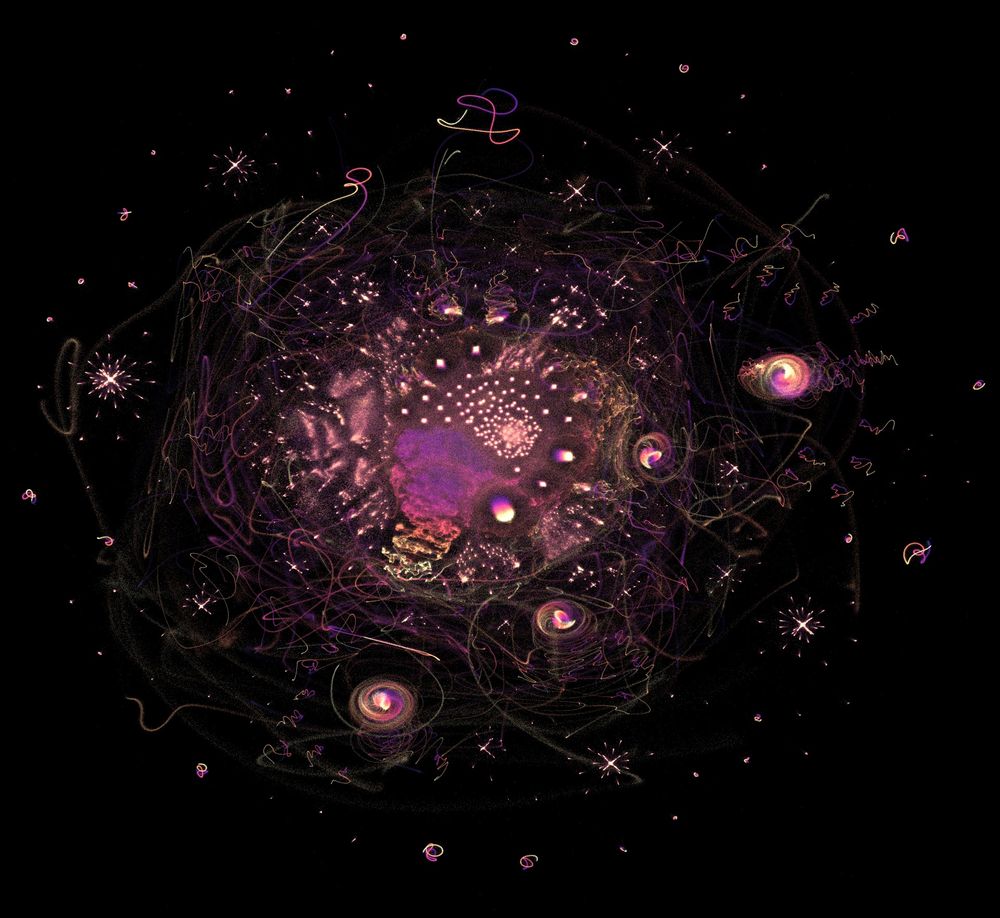
Here are the first 8 million integers, rendered by John Healy.
johnhw.github.io/umap_primes/...
29.07.2025 20:01 — 👍 1 🔁 0 💬 1 📌 0
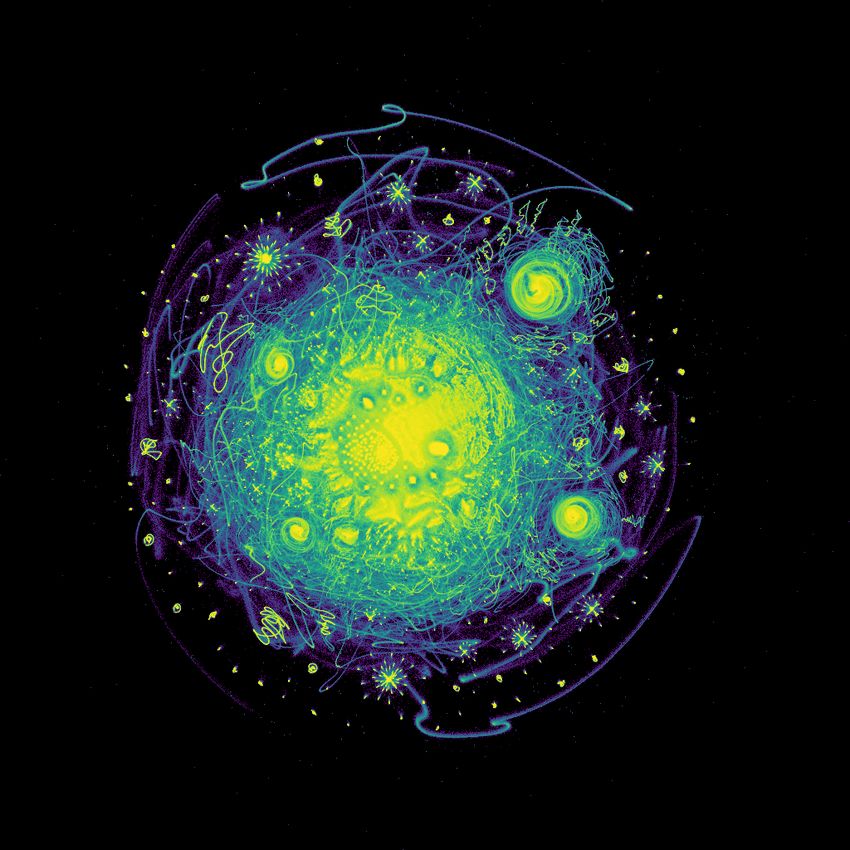
What is the hidden structure of the natural numbers?
In the UMAP paper, @lelandmcinnes.bsky.social et al. embedded the integers as binary vectors of their prime factors.
This UMAP visualization of 30 million integers reveals a fractal-like geometry.
#UMAP #mathart #dataviz #numbertheory
29.07.2025 20:01 — 👍 6 🔁 0 💬 2 📌 0
👀
award winning matheamtician, PhD student at University of Denver, some finite number of feral raccoons in a trenchcoat
Associate professor leading EPFL's Realistic Graphics Lab. My research involves inverse graphics, material appearance modeling and physically based rendering
Postdoc at EPFL interested in geometry and differentiable physics. Personal website: https://qbecky.github.io.
Mathematician, lover of mountains, mother of four, EPFL professor
Still wondering who is asking the questions. Who are you?
EPFL Brain Mind Institute researchers develop & deploy technology to gain fundamental insight into brain & spinal cord systems, exploiting this knowledge for new therapies for brain disorders & towards novel intelligent machines https://go.epfl.ch/brain
The Max Planck Institute for Brain Research in Frankfurt, Germany, is one of the world-leading institutions studying the neural circuits in the brain. Imprint: https://brain.mpg.de/imprint
Neuroscience PhD student @mpibrain.bsky.social studying brain #evolution and #cephalopods 🦑🧠 M.Sc. molecular biotechnology
An element of truth - videos about science, education, and interesting things.
Mathematics, Computer Science, Art, Design, Music, Soup, Pedantry. he/him/anything
Mainly over at @csk@mathstodon.xyz, but happy to follow people here and might check in occasionally.
Lecturer at @GatsbyUCL
palmigianolab.com
Professor at the Gatsby Unit and Sainsbury Wellcome Centre, UCL, trying to figure out how we learn
Neuroscientist, in theory. Studying sleep and navigation in 🧠s and 💻s.
Incoming Assistant Professor at Yale Neuroscience, Wu Tsai Institute.
An emergent property of a few billion neurons, their interactions with each other and the world over ~1 century.
Post-doc at Mila & U de Montréal in Guillaume Lajoie & Matt Perich's labs
Focus on neuroscience, RL for motor learning, neural control of movement, NeuroAI.
Professor at Université de Montréal & Mila -- Québec AI Institute
mathematics - neuroscience - artificial intelligence
I like brains 🧟♂️ 🧠
PhD student in computational neuroscience supervised by Wulfram Gerstner and Johanni Brea
https://flavio-martinelli.github.io/
Into brain development and evolution (+open science, generative art, genomics, music, 🇨🇱...). If you have questions about mechanical morphogenesis, I have more!
https://orcid.org/0000-0002-6671-858X
3D weaver - bamboo, textile, paper
https://www.nytimes.com/2019/07/29/science/math-weaving-bamboo.html?smid=nytcore-ios-share&referringSource=articleShare

